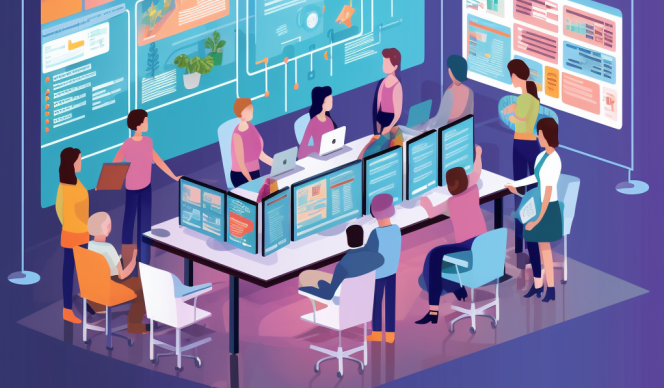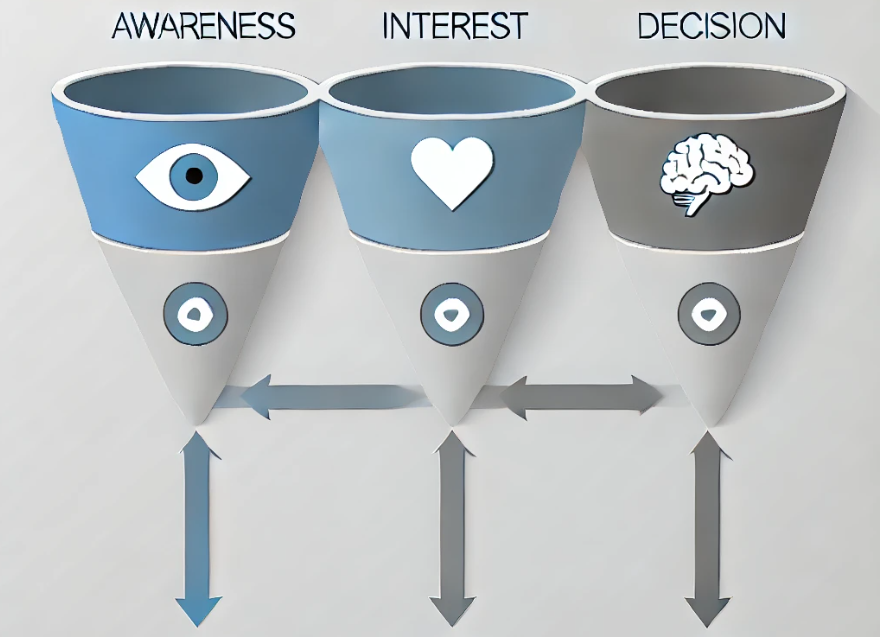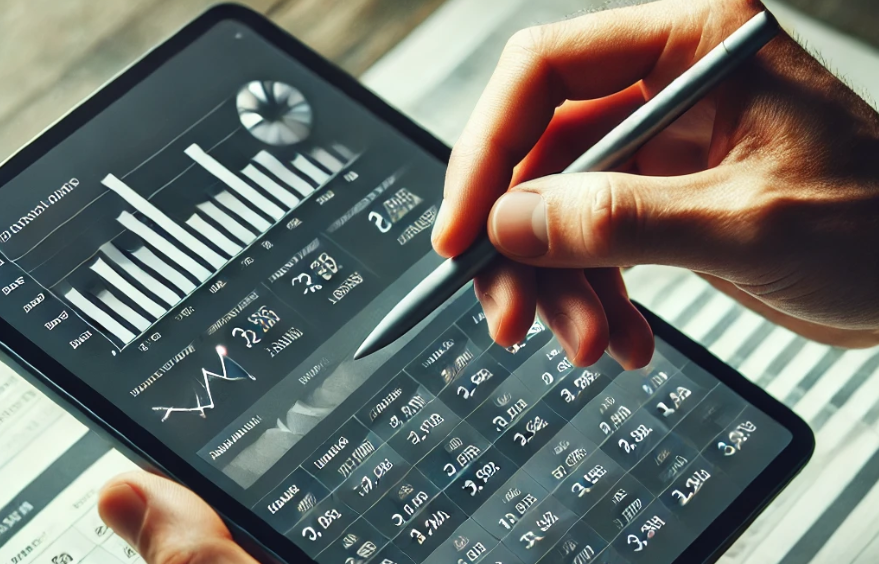In the competitive world of business, understanding the true cost of acquiring and retaining customers is crucial for sustainable growth. While many companies focus on top-line revenue, savvy leaders know that dissecting the expenses associated with their sales funnel is equally important. This article will guide you through creating a detailed cost breakdown of your sales funnel, helping you optimize your marketing and sales efforts for maximum efficiency.
Understanding the Modern Sales Funnel
Before diving into costs, it’s essential to understand the structure of today’s sales funnel. The traditional model of Awareness, Interest, Desire, and Action (AIDA) has evolved to reflect the complexities of the digital age:
- Awareness: Potential customers become aware of your brand or product.
- Interest: They show interest by engaging with your content or website.
- Consideration: Prospects actively evaluate your offering against competitors.
- Intent: They demonstrate a clear intention to purchase.
- Evaluation: Final assessment and decision-making process.
- Purchase: The actual transaction occurs.
- Loyalty/Advocacy: Post-purchase engagement and potential referrals.
Each stage incurs specific costs that contribute to your overall customer acquisition expense.
Breaking Down Funnel Costs by Stage
Let’s examine the typical costs associated with each stage of the funnel:
Awareness
- Digital advertising (pay-per-click, display ads, social media ads)
- Content marketing (blog posts, videos, podcasts)
- Public relations and media outreach
- Branding and design
Interest
- Lead magnets and gated content creation
- Email marketing software and campaigns
- Social media management tools and personnel
- Website optimization and maintenance
Consideration
- Targeted content creation for comparison and evaluation
- Retargeting campaigns
- Case studies and testimonials
- Competitor analysis tools
Intent
- Sales team salaries and commissions
- Customer relationship management (CRM) software
- Proposal and quote generation tools
- Product demonstrations and trials
Evaluation
- Follow-up communication resources
- Personalized content and offers
- Sales enablement materials
- Customer support during the decision process
Purchase
- Payment processing fees
- Order fulfillment systems
- Contract management software
- Onboarding materials and processes
Loyalty/Advocacy
- Customer success team salaries
- Loyalty programs and rewards
- Referral incentives
- Ongoing customer education and support
Creating Your Cost Breakdown Template
To effectively track and analyze your funnel costs, you need a comprehensive template. Here’s how to build one:
- List all cost categories: Start with broad categories like Marketing, Sales, Technology, and Customer Service.
- Break down each category: Under Marketing, for example, you might have subcategories for Content Creation, Advertising, and Analytics Tools.
- Assign costs to funnel stages: Allocate each expense to the appropriate stage(s) of your funnel.
- Include both fixed and variable costs: Don’t forget one-time expenses like software purchases alongside ongoing costs like salaries.
- Add columns for actual vs. budgeted spend: This allows for easy comparison and identification of overruns.
- Calculate key metrics: Include formulas for important figures like Cost Per Acquisition (CPA) and Customer Lifetime Value (CLTV).
- Update regularly: Set a schedule for updating your template, whether monthly or quarterly.
Industry-Specific Considerations
While the basic structure of a sales funnel remains consistent across industries, the specific costs can vary significantly:
E-commerce
- Higher emphasis on advertising and retargeting
- Significant investment in website optimization and user experience
- Costs associated with logistics and returns management
SaaS (Software as a Service)
- Heavier investment in content marketing and thought leadership
- Costs for product trials and freemium models
- Ongoing customer success and retention efforts
B2B Services
- Greater focus on relationship-building and in-person sales
- Costs for attending industry events and conferences
- Investment in detailed case studies and ROI calculators
Optimizing Your Funnel for Cost-Efficiency
Once you have a clear picture of your funnel costs, you can work on optimization:
- Identify bottlenecks: Look for stages with high costs but low conversion rates.
- Leverage automation: Implement tools to automate repetitive tasks, especially in lead nurturing and customer support.
- Test and iterate: Continuously A/B test your marketing messages and sales approaches to improve conversion rates.
- Focus on high-value channels: Allocate more resources to the marketing channels and tactics that deliver the best ROI.
- Improve targeting: Use data analytics to refine your ideal customer profile and target your efforts more precisely.
- Streamline the sales process: Analyze your sales cycle for unnecessary steps or delays that might be increasing costs.
- Invest in customer retention: Often, it’s more cost-effective to retain existing customers than to acquire new ones.
Measuring Success and ROI
To truly understand the effectiveness of your sales funnel, you need to track key performance indicators (KPIs) such as:
- Conversion rates at each stage of the funnel
- Customer Acquisition Cost (CAC)
- Customer Lifetime Value (CLTV)
- Return on Ad Spend (ROAS)
- Sales cycle length
- Customer retention rate
Regularly reviewing these metrics against your cost breakdown will help you make data-driven decisions about where to invest your resources for maximum impact.
The Role of Technology in Cost Management
Advancements in technology are continually offering new ways to manage and optimize funnel costs:
- AI-powered chatbots can handle initial customer inquiries, reducing the load on your sales team.
- Predictive analytics can help identify which leads are most likely to convert, allowing for more targeted resource allocation.
- Marketing automation platforms can streamline many aspects of lead nurturing and customer communication.
- Customer data platforms (CDPs) can provide a unified view of customer interactions across all touchpoints, improving targeting and personalization efforts.
While implementing these technologies requires an upfront investment, they can significantly reduce long-term costs and improve overall funnel efficiency.
Conclusion: The Power of Precision in Funnel Management
Understanding and optimizing the costs associated with your sales funnel is not a one-time effort but an ongoing process of refinement and improvement. By creating a detailed cost breakdown template and regularly analyzing your funnel’s performance, you can make informed decisions that drive profitability and growth.
Remember, the goal is not simply to reduce costs across the board, but to strategically allocate resources where they will have the greatest impact. Sometimes, increasing investment in certain areas of your funnel can lead to dramatic improvements in overall performance and ROI.
As you embark on this journey of funnel cost optimization, consider seeking expert guidance. A Pitch Deck Consultancy can provide valuable insights and strategies tailored to your specific industry and business model, helping you create a more efficient and effective sales process.
By taking a data-driven approach to managing your sales funnel costs, you’ll be well-positioned to outperform competitors and achieve sustainable success in today’s dynamic business landscape.











